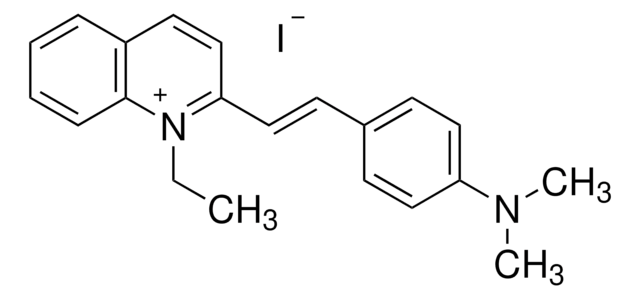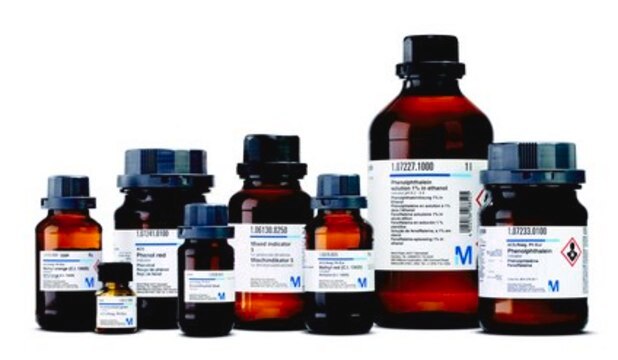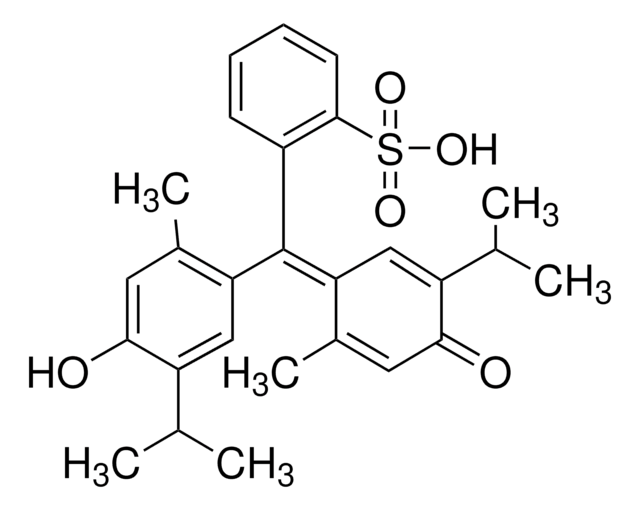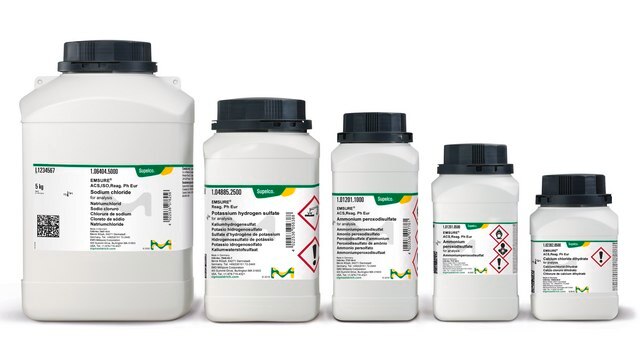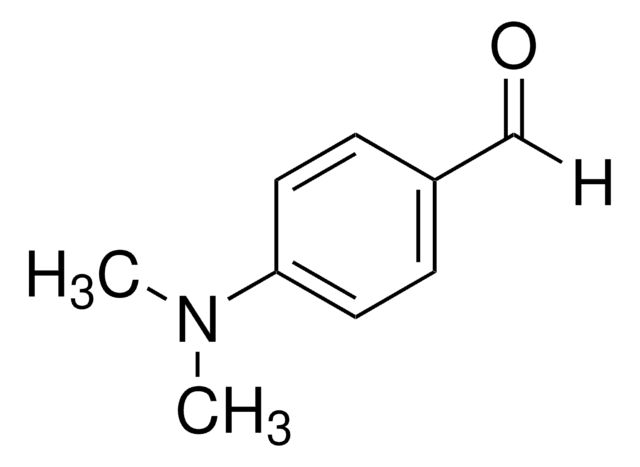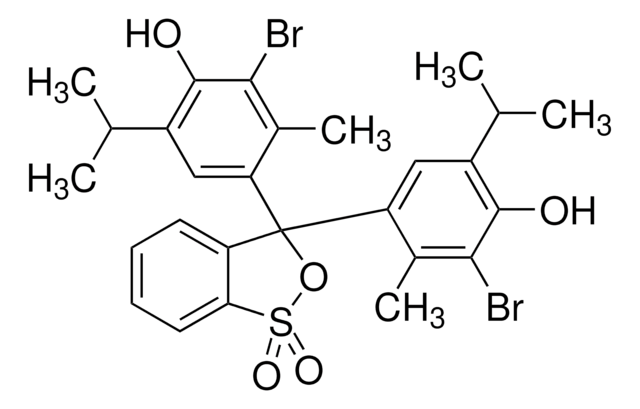1.02282
Quinaldine red
pH indicator, Reag. Ph Eur
Synonym(e):
Quinaldine red
About This Item
Empfohlene Produkte
product name
Quinaldine red, indicator Reag. Ph Eur
Agentur
reag. Ph. Eur.
Qualitätsniveau
Form
solid
Verunreinigungen
≤5% Water (Karl Fischer)
visual transition interval
1.4-3.2, colorless to red
mp (Schmelzpunkt)
240 °C (decomposition)
Schüttdichte
290 kg/m3
λmax
528-533 nm in acetic acid
Lagertemp.
2-30°C
InChI
1S/C21H23N2.HI/c1-4-23-20(16-12-18-7-5-6-8-21(18)23)15-11-17-9-13-19(14-10-17)22(2)3;/h5-16H,4H2,1-3H3;1H/q+1;/p-1
InChIKey
JOLANDVPGMEGLK-UHFFFAOYSA-M
Verwandte Kategorien
Anwendung
- Quinaldine Red as a fluorescent probe for determining the melting temperature (T(m)) of proteins: a simple, rapid and high-throughput assay.: This study presents Quinaldine Red as an effective fluorescent probe for determining the melting temperatures of proteins, offering a rapid and high-throughput method suitable for broad applications in biochemical research (Das et al., 2024).
- Red emitting fluorogenic dye as an efficient turn-on probe for milk allergen.: Explores the use of a red-emitting fluorogenic dye, likely involving Quinaldine Red, as a turn-on probe for detecting milk allergens, highlighting its potential in food safety and allergen detection (Chakraborty, 2022).
- A rapid, naked-eye detection of hypochlorite and bisulfite using a robust and highly-photostable indicator dye Quinaldine Red in aqueous medium.: Describes the application of Quinaldine Red for the visual detection of chemicals like hypochlorite and bisulfite, underlining its utility in environmental monitoring and chemical safety (Dutta et al., 2018).
- Self-Assembly and Formation of Chromonic Liquid Crystals from the Dyes Quinaldine Red Acetate and Pyronin Y.: Investigates the self-assembly properties of Quinaldine Red and its application in forming chromonic liquid crystals, demonstrating its potential in material science and nanotechnology (Magana et al., 2016).
Hinweis zur Analyse
Umschlagsbereich: pH 1.4 - pH 3.2 farblos - rot
Absorptionsmaximum λmax. (Essigsäure): 528 - 533 nm
Spez. Extinktion E1%/1cm (λmax; 0.005 g/l; Essigsäure; berechnet auf wasserfreie Substanz): 1150 - 1480
Wasser (nach Karl Fischer): ≤ 5 %
Lagerklassenschlüssel
11 - Combustible Solids
WGK
WGK 3
Flammpunkt (°F)
Not applicable
Flammpunkt (°C)
Not applicable
Analysenzertifikate (COA)
Suchen Sie nach Analysenzertifikate (COA), indem Sie die Lot-/Chargennummer des Produkts eingeben. Lot- und Chargennummern sind auf dem Produktetikett hinter den Wörtern ‘Lot’ oder ‘Batch’ (Lot oder Charge) zu finden.
Besitzen Sie dieses Produkt bereits?
In der Dokumentenbibliothek finden Sie die Dokumentation zu den Produkten, die Sie kürzlich erworben haben.
Unser Team von Wissenschaftlern verfügt über Erfahrung in allen Forschungsbereichen einschließlich Life Science, Materialwissenschaften, chemischer Synthese, Chromatographie, Analytik und vielen mehr..
Setzen Sie sich mit dem technischen Dienst in Verbindung.